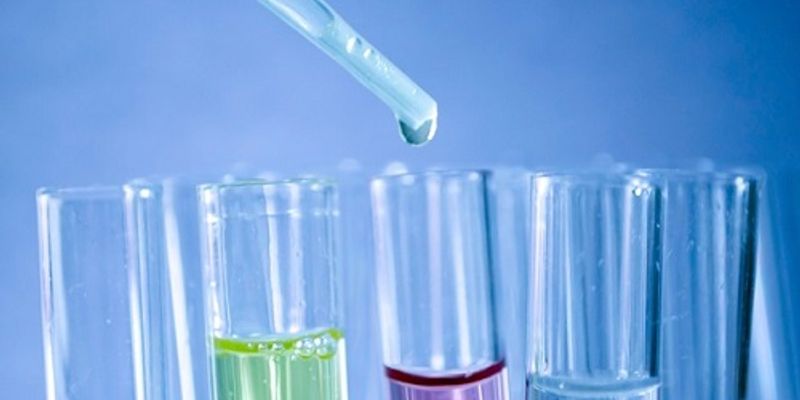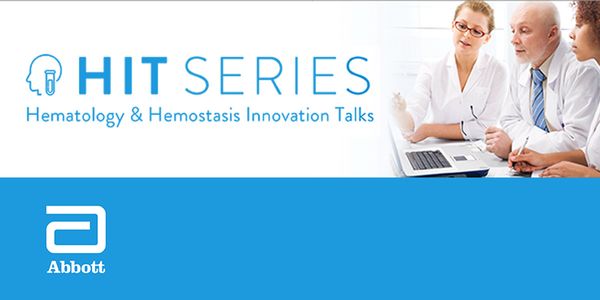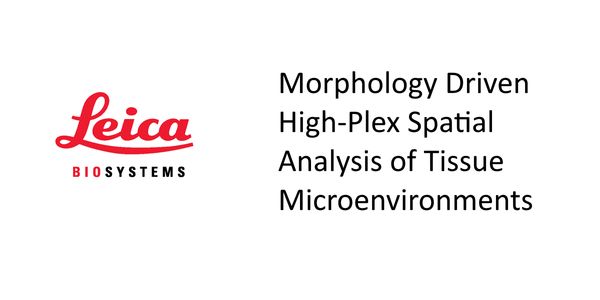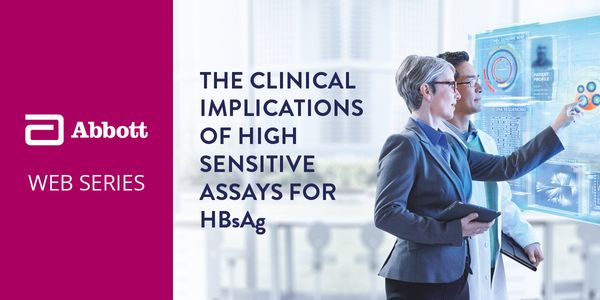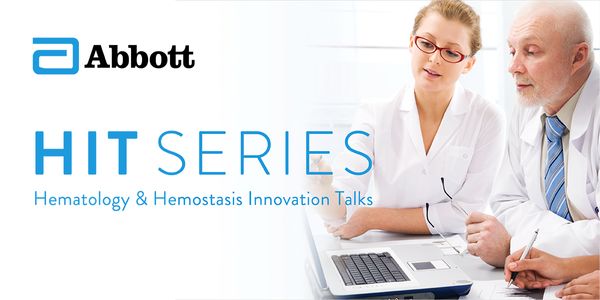Lab Automation
Lab Automation or laboratory automation is a multi-disciplinary strategy to research, develop, optimize and capitalize on technologies in the laboratory that enable new and improved processes. Laboratory automation professionals are academic, commercial and government researchers, scientists and engineers who conduct research and develop new technologies to increase productivity, elevate experimental data quality, reduce lab process cycle times, or enable experimentation that otherwise would be impossible.
-
MAR 03, 2020 | 9:00 AMDATE: March 3, 2020 TIME: 9:00am PT, 12:00pm ET Despite the advances of new drugs and the lowering of carbapenem breakpoints to enhance detection of CRE, there should be no complacency about...FEB 26, 2020 | 1:30 PMWhether you are performing killing assays, characterizing the tumor microenvironment, or investigating immunogenicity, primary cells are essential for the discovery of new therapeutics. Conc...Speaker: Josh Mahlios, PhDFEB 26, 2020 | 12:00 PMDigital spatial profiling (DSP) on the NanoString GeoMx platform enables high plex molecular profiling of clinical tissue samples. This new profiling strategy enables deep insights into the...Speaker: Sarah Warren, PhDPresented at: Drug Discovery & Development Virtual Event Series 2020
Sponsored By: NanoString TechnologiesFEB 26, 2020 | 10:30 AMQIAGEN CLC Genomics Workbench is a powerful solution to analyze and visualize next generation sequencing (NGS) data. Powered by cutting-edge technology and accelerated algorithms, it support...Speaker: Leif Schauser, PhDFEB 26, 2020 | 9:00 AMCRISPR revolutionized gene editing, but multi-target screening remains a complex goal. In addition, the fast pace of CRISPR technology development has brought sophisticated options for libra...Speaker: Andrew Ravanelli, PhDFEB 26, 2020 | 7:30 AMRecent advances in DNA sequencing and omics-based capabilities are revealing incredible therapeutic opportunities and quickly transforming drug discovery. Molecularly targeted drugs aim to e...FEB 25, 2020 | 10:00 AMDATE: 25 Febrero 2020 TIME: 13:00 COT, 10:00 PST Los desarrollos tecnológicos en analizadores automatizados de Hematología continúan transformando el laboratorio de Hema...FEB 14, 2020 | 10:00 AMDATE: February 14, 2020 TIME: 10:00am PT, 1:00pm ET Separation challenges arise in the lab on a daily basis and you rely on a broad analytical toolset to help solve them. In this presentatio...JAN 14, 2020 | 9:00 AMFecal elastase-1 – a biomarker for pancreatic exocrine insufficiency(EPI) continues to gain traction as an ideal biomarker for assessing EPI. This presentation will include a review of...JAN 01, 2020 | 6:00 AMNon-alcoholic fatty liver disease (NAFLD) is the most common form of chronic liver disease in developed countries, and it affects over 25% of the population worldwide. Within the next five y...JAN 01, 2020 | 6:00 AMLearning Objectives: 1. Describe the exposure response relationships with vancomycin and acute kidney injury 2. Define biomarkers that may be useful to improve Precision Dosing...Speaker: Marc Scheetz, PharmD, MSc, FCCP, FCPPresented at: Drug Discovery & Development Virtual Event Series 2020
JAN 01, 2020 | 6:00 AMMicrophysiological systems (MPS), also known as organ-on-chips, are small scale in vitro cell cultures which mimic facets of tissue or organ level function. MPS frequently utilise primary hu...Speaker: Tomasz Kostrzewski, PhDPresented at: Drug Discovery & Development Virtual Event Series 2020
JAN 01, 2020 | 6:00 AMThe aim of the lecture is to give an insight into the use of 3D liver micro tissues (3D liMTs) in drug discovery and translational safety. In translational toxicology, 3D LiMTs have a high i...JAN 01, 2020 | 6:00 AMThe OrganoPlate is a microtiterplate based Organ-on-a-Chip platform for high throughput drug safety and efficacy screening. It contains up to 96 cell culture chambers that allow co-culture o...Speaker: Sebastiaan Trietsch, PhDPresented at: Drug Discovery & Development Virtual Event Series 2020
JAN 01, 2020 | 6:00 AMThe use of primary cells in vitro is compromised by the limited quantity of cells that can be isolated from one donor, a lack of or very restricted proliferation capacity (e.g. hepatocytes)...Speaker: Astrid Nörenberg, PhDPresented at: Drug Discovery & Development Virtual Event Series 2020
JAN 01, 2020 | 6:00 AMAccurate DNA replication is essential to transmit the genetic information from one generation to another. However, replication is frequently challenged by barriers that originate from exogen...Speaker: Chames Kermi, PhD, PharmDPresented at: Drug Discovery & Development Virtual Event Series 2020
JAN 01, 2020 | 6:00 AMBiomarkers are critical tools for all stages of cancer research, from drug development through clinical applications. Cancer is fundamentally a disease of unregulated cell growth and circumv...Speaker: Olivia Stricker, PhDPresented at: Drug Discovery & Development Virtual Event Series 2020
JAN 01, 2020 | 6:00 AM“The poor translatability of early-stage preclinical models is a major setback in oncology drug development. Immortalized cell lines, that are extensively used in drug screens, undergo...JAN 01, 2020 | 6:00 AMThe liver plays a critical role in the metabolism and clearance of more than 70% of marketed drugs. Furthermore, toxicity to the liver is a major reason for preclinical and clinical drug fai...JAN 01, 2020 | 6:00 AMWith an increasing push to improve safety, efficacy, and efficiency throughout the drug development pipeline, researchers are evermore looking to improve the predictive capacity of their in...DEC 05, 2019 | 9:00 AMDATE: December 5, 2019TIME: 9:00am PST, 12:00pm EST Characterization of the spatial distribution and abundance of proteins and mRNAs with morphological context within tissues e...Speaker: Mathias Holpert, PhD , Traci DeGeer, BS, HT (ASCP) HTL, QIHCSponsored By: Leica Biosystems, NanoString TechnologiesDEC 05, 2019 | 5:00 AMDATE: December 5, 2019TIME: 5:00am PST, 8:00am EST The diagnosis of an active infection by the hepatitis B virus (HBV) relies on testing for the HBV surface antigen (HBsAg). Ov...NOV 25, 2019 | 9:00 AMFECHA: 25 Noviembre 2019 TIEMPO: 12:00PM UTC-5, 9:00AM PST Hoy en día, los analizadores de hematología pueden recopilar grandes cantidades de datos acerca de las caracter&...OCT 24, 2019 | 10:30 AMSupercritical fluid chromatography (SFC) has historically been very effective for exacting difficult chiral separations, with an unmatched power in terms of enabling highly efficient enantios...
MAR 03, 2020 | 9:00 AM
DATE: March 3, 2020 TIME: 9:00am PT, 12:00pm ET Despite the advances of new drugs and the lowering of carbapenem breakpoints to enhance detection of CRE, there should be no complacency about...
FEB 26, 2020 | 1:30 PM
Whether you are performing killing assays, characterizing the tumor microenvironment, or investigating immunogenicity, primary cells are essential for the discovery of new therapeutics. Conc...
Speaker:
Josh Mahlios, PhD
FEB 26, 2020 | 12:00 PM
Digital spatial profiling (DSP) on the NanoString GeoMx platform enables high plex molecular profiling of clinical tissue samples. This new profiling strategy enables deep insights into the...
Speaker:
Sarah Warren, PhD
Presented at: Drug Discovery & Development Virtual Event Series 2020
Sponsored By: NanoString Technologies
Sponsored By: NanoString Technologies
FEB 26, 2020 | 10:30 AM
QIAGEN CLC Genomics Workbench is a powerful solution to analyze and visualize next generation sequencing (NGS) data. Powered by cutting-edge technology and accelerated algorithms, it support...
Speaker:
Leif Schauser, PhD
FEB 26, 2020 | 9:00 AM
CRISPR revolutionized gene editing, but multi-target screening remains a complex goal. In addition, the fast pace of CRISPR technology development has brought sophisticated options for libra...
Speaker:
Andrew Ravanelli, PhD
FEB 26, 2020 | 7:30 AM
Recent advances in DNA sequencing and omics-based capabilities are revealing incredible therapeutic opportunities and quickly transforming drug discovery. Molecularly targeted drugs aim to e...
FEB 25, 2020 | 10:00 AM
DATE: 25 Febrero 2020 TIME: 13:00 COT, 10:00 PST Los desarrollos tecnológicos en analizadores automatizados de Hematología continúan transformando el laboratorio de Hema...
FEB 14, 2020 | 10:00 AM
DATE: February 14, 2020 TIME: 10:00am PT, 1:00pm ET Separation challenges arise in the lab on a daily basis and you rely on a broad analytical toolset to help solve them. In this presentatio...
JAN 14, 2020 | 9:00 AM
Fecal elastase-1 – a biomarker for pancreatic exocrine insufficiency(EPI) continues to gain traction as an ideal biomarker for assessing EPI. This presentation will include a review of...
JAN 01, 2020 | 6:00 AM
Non-alcoholic fatty liver disease (NAFLD) is the most common form of chronic liver disease in developed countries, and it affects over 25% of the population worldwide. Within the next five y...
JAN 01, 2020 | 6:00 AM
Learning Objectives: 1. Describe the exposure response relationships with vancomycin and acute kidney injury 2. Define biomarkers that may be useful to improve Precision Dosing...
Speaker:
Marc Scheetz, PharmD, MSc, FCCP, FCP
Presented at: Drug Discovery & Development Virtual Event Series 2020
JAN 01, 2020 | 6:00 AM
Microphysiological systems (MPS), also known as organ-on-chips, are small scale in vitro cell cultures which mimic facets of tissue or organ level function. MPS frequently utilise primary hu...
Speaker:
Tomasz Kostrzewski, PhD
Presented at: Drug Discovery & Development Virtual Event Series 2020
JAN 01, 2020 | 6:00 AM
The aim of the lecture is to give an insight into the use of 3D liver micro tissues (3D liMTs) in drug discovery and translational safety. In translational toxicology, 3D LiMTs have a high i...
JAN 01, 2020 | 6:00 AM
The OrganoPlate is a microtiterplate based Organ-on-a-Chip platform for high throughput drug safety and efficacy screening. It contains up to 96 cell culture chambers that allow co-culture o...
Speaker:
Sebastiaan Trietsch, PhD
Presented at: Drug Discovery & Development Virtual Event Series 2020
JAN 01, 2020 | 6:00 AM
The use of primary cells in vitro is compromised by the limited quantity of cells that can be isolated from one donor, a lack of or very restricted proliferation capacity (e.g. hepatocytes)...
Speaker:
Astrid Nörenberg, PhD
Presented at: Drug Discovery & Development Virtual Event Series 2020
JAN 01, 2020 | 6:00 AM
Accurate DNA replication is essential to transmit the genetic information from one generation to another. However, replication is frequently challenged by barriers that originate from exogen...
Speaker:
Chames Kermi, PhD, PharmD
Presented at: Drug Discovery & Development Virtual Event Series 2020
JAN 01, 2020 | 6:00 AM
Biomarkers are critical tools for all stages of cancer research, from drug development through clinical applications. Cancer is fundamentally a disease of unregulated cell growth and circumv...
Speaker:
Olivia Stricker, PhD
Presented at: Drug Discovery & Development Virtual Event Series 2020
JAN 01, 2020 | 6:00 AM
“The poor translatability of early-stage preclinical models is a major setback in oncology drug development. Immortalized cell lines, that are extensively used in drug screens, undergo...
JAN 01, 2020 | 6:00 AM
The liver plays a critical role in the metabolism and clearance of more than 70% of marketed drugs. Furthermore, toxicity to the liver is a major reason for preclinical and clinical drug fai...
JAN 01, 2020 | 6:00 AM
With an increasing push to improve safety, efficacy, and efficiency throughout the drug development pipeline, researchers are evermore looking to improve the predictive capacity of their in...
DEC 05, 2019 | 9:00 AM
DATE: December 5, 2019TIME: 9:00am PST, 12:00pm EST Characterization of the spatial distribution and abundance of proteins and mRNAs with morphological context within tissues e...
Speaker:
Mathias Holpert, PhD
, Traci DeGeer, BS, HT (ASCP) HTL, QIHC
Sponsored By: Leica Biosystems,
NanoString Technologies
DEC 05, 2019 | 5:00 AM
DATE: December 5, 2019TIME: 5:00am PST, 8:00am EST The diagnosis of an active infection by the hepatitis B virus (HBV) relies on testing for the HBV surface antigen (HBsAg). Ov...
NOV 25, 2019 | 9:00 AM
FECHA: 25 Noviembre 2019 TIEMPO: 12:00PM UTC-5, 9:00AM PST Hoy en día, los analizadores de hematología pueden recopilar grandes cantidades de datos acerca de las caracter&...
OCT 24, 2019 | 10:30 AM
Supercritical fluid chromatography (SFC) has historically been very effective for exacting difficult chiral separations, with an unmatched power in terms of enabling highly efficient enantios...
